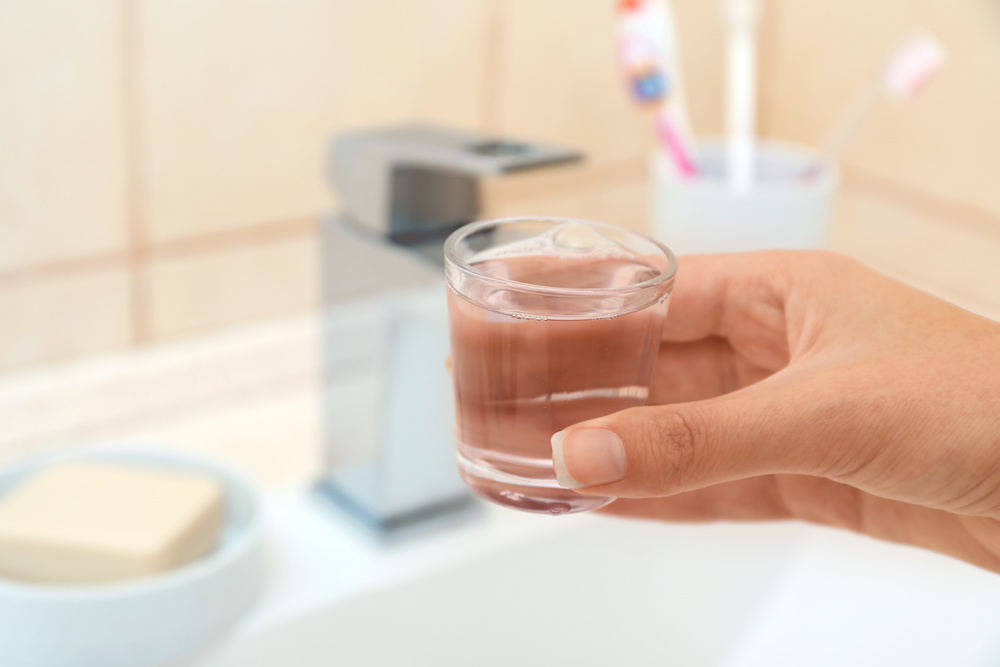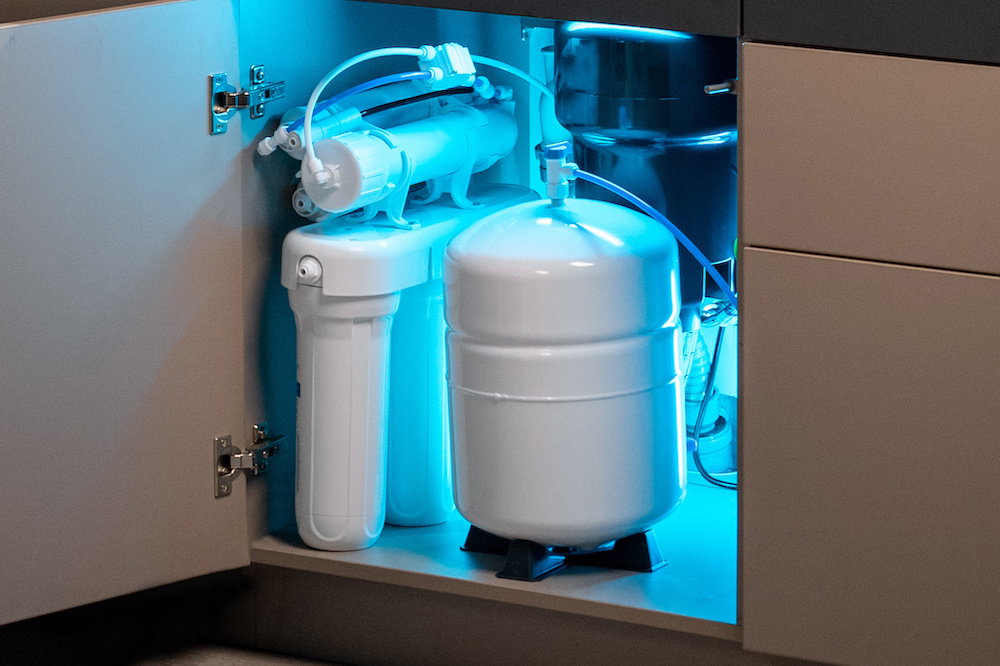Fluoride is a naturally occurring beneficial mineral found in water but can be harmful when consumed excessively. Thus, the need to filter your water.
However, many water purification systems, such as boiling and using mounted filters, are not adequate to rid water of fluoride.
How about reverse osmosis (or RO)? Does reverse osmosis remove fluoride?
To date, RO remains to be one of the most efficient options for removing minerals such as fluoride in water.
So, how does reverse osmosis deal with fluoride? Are there any alternatives to it? Allow us to answer these questions and more for you.
Why Remove Flouride From Tap or Drinking Water?
The levels of fluoride in community water systems are strictly regulated by the Department of Health and Human Services (HHS).
The current drinking water standard for fluoride levels is 4.0 mg per liter.
Still, there are cases when your water might exceed those levels due to certain factors, such as the geological composition of your location.
According to the Environmental Protection Agency, overexposure to fluoride can impact the dental formation of a young child.
It can also discolor or stain the tooth enamel when a child consumes too much fluoride before age nine or during teeth-forming years.
Adults can also suffer from an increased risk of bone pain, tenderness, muscle impairment, and joint pain.
Studies have also found that overexposure to fluoride disrupts normal thyroid functioning, leading to hypothyroidism.
Another study found a link between the decrease in IQ scores of children ages three to four and a mother’s increased fluoride consumption during pregnancy.
For these reasons, some residents might want to remove fluoride from their drinking water.
After all, there are other ways to benefit from fluoride, such as over-the-counter supplements and dental products.
Does Reverse Osmosis Remove Fluoride Completely?
Although reverse osmosis is one of the most efficient methods of removing fluoride from water, it won’t completely rid your drinking water of it.
It can remove 85 to 95 percent of fluoride, depending on several factors, including the quality of your reverse osmosis membrane and the number of your preferred system’s filtration stages.
How Does Reverse Osmosis Remove Fluoride?
It all boils down to science.
As an overview, osmosis is a natural-occurring phenomenon that refers to how a lower saline solution migrates towards a higher one.
As the name suggests, RO reverses the process through applied water pressure.
This way, a higher saline solution gets forced into a lower saline solution environment with the help of a semi-permeable membrane.
It results in a filtration efficiency of up to 99% of contaminants removed. This includes various chemicals and minerals, such as fluoride.
How? Fluoride and many other contaminants usually have larger molecules than water.
Since RO systems have a semi-permeable membrane with tiny pores, only water molecules will fit.
All the other molecules that don’t make it through the reverse osmosis system will drain out with the wastewater.
Does Your Water Have Fluoride?
Remember that fluoride isn’t 100% harmful. Having a healthy dose of fluoride in your drinking water can potentially improve your quality of life.
It can reduce tooth decay by 25% in both children and adults. More importantly, you’ll suffer less pain if and when you have tooth decay.
With healthy teeth, you’ll be able to enjoy your food and drinks more when you have healthy teeth.
It also helps you save money in the long run because you have less need for dental procedures, fillings, dentures, and other related dental products and services.
That’s why the U.S. government made an effort to make fluoride more accessible to people through water fluoridation.
This project was first done in Michigan back in 1945. As of 2016, 73% of the United States community water systems distribute fluoridated water across the country.
It’s also being practiced in other countries.
That said, the decision to fluoridate water depends on each city. Hence, some locations may not have fluoride in their tap water.
Still, it is natural for water, regardless of its source, to have traces of the mineral.
So how would know how much fluoride is in your drinking water? There are various ways to do so.

Check the Consumer Confidence Reports (or CCR)
The easiest way to determine your water’s fluoride content is to check your area’s Consumer Confidence Reports (or CCR).
It’s a document that includes a location’s water quality report that gets published annually.
The Environmental Protection Agency requires it from every community public water system.
The CCR contains a lot of helpful information, such as where your water is coming from, the various contaminants detected from the supplied water, the potential health risks you are exposed to (as well as the safeguards you can do to avoid contracting waterborne diseases).
This document should reveal not just the levels of fluoride in your water but also of other minerals.
You can access these reports online because community water suppliers are legally obligated to provide bill-paying consumers with their CCR.
Test Your Own Water
Knowing how much fluoride your drinking water contains is a little bit more challenging when you’re sourcing your water from a non-community system.
The same goes for those who get their water from private wells too. If that’s the case, then here are your options:
You can get your water professionally tested.
There are laboratories across the country that offer water testing.
For a fee, they’ll send a test kit to your home with instructions on collecting your water sample.
You will then send the sample back to their lab for testing. There are two things we like about having our water professionally tested.
First, they are very detailed. Aside from fluoride levels, these labs will report the presence of other contaminants in your water.
Second, they are more accurate compared to other testing methods. Most of these testing bodies have ready-made testing packages for wells and city water.
We recommend looking into their options to see which of their plans is the most suitable for your needs.
You can use testing strips.
Getting your water lab tested can be costly. You may get a home testing kit if you want a more affordable option.
These kits contain everything you’ll need to determine what’s in your water. These include testing strips that change color based on the components in your water.
Just dip them into a glass, and you’re all set. These kits will also come with a legend on what these colors mean.
They can also give you a range of the level of contaminants in your water depending on the shade your testing strip revealed.
While they don’t return accurate results, they’re enough to give you an idea of how much fluoride you’re dealing with.
Most of these kits cost less than $20, making them pretty affordable too.
You can use a photometer.
Finally, it’s also possible to use a photometer to test for fluoride in your water. It’s an electronic sensor that you can feed a sample to.
It will then reveal your water’s fluoride level on its screen.
Don’t worry. Your gadget will come with a manual on collecting and preparing your water samples, along with how to calibrate the device properly so you can get somewhat accurate results.
By “somewhat”, we mean that a photosensor’s results are more accurate than test strips, but it still wouldn’t reach the level of lab certificates.
Why Is Testing Needed?
Knowing how much fluoride you have in your water will help you decide on the water filtration method most suitable for you.
If the components in your water are within the acceptable range, you might not even need to have a water filtration system installed.
On the other hand, if the test results revealed a problematic amount of contaminants in your water, we highly recommend reverse osmosis.
Other Methods to Remove Fluoride From Your Water
Installing an RO system isn’t the only way to decrease your water’s fluoride levels. There are other alternative methods available, including:
Distillation
Distillation is another effective method to remove fluoride from your water. It involves heating the water until it evaporates.
The steam produced is then captured until you collect your desired amount of distilled water. This process leaves fluoride and other contaminants behind.
However, distilled water is not necessarily recommended for drinking, as ultra-pure water can steal minerals from your body.
Bone Char Carbon Filter
Among the most traditional methods of removing fluoride from water is the bone char carbon filter, which is made by heating animal bones to extremely high temperatures.
This process increases the filter’s adsorption capabilities, capturing or altering the fluoride content or the water that passes through it.
However, a bone char filter can only last from four to six years compared to RO filters which can last up to 15 years.
Activated Alumina Filter
Using activated alumina to absorb fluoride is also an option even the EPA recommends.
However, it is only effective when your water’s pH is less than 8.5, specifically between pH 5 and 6.
It also requires longer contact time to remove fluoride and other water contaminants effectively, leading to slower water rates.
Removing Fluoride Through Reverse Osmosis
Water fluoridation is a government effort to improve our dental health. The problem is excessive fluoride consumption can have some adverse side effects.
Fortunately, different methods can help decrease fluoride levels in our water, such as reverse osmosis.
If you’re wondering, “Does reverse osmosis remove fluoride?” then yes, it can. You have other options worth exploring as well.
However, before you perform any of these methods, it would be wise to test your water first.
This way, you’ll also have a reference point should you want to gauge how efficient your preferred method is in the future.
Good luck!

